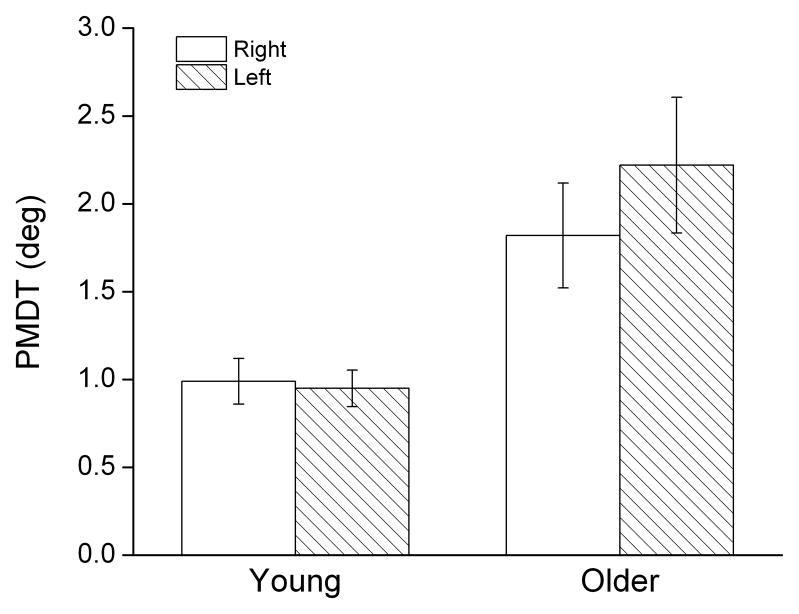Figure 1.
Mean (+/− 1 SE) passive movement detection thresholds (PMDT) in young and older adults. Open bars represent data obtained from movements made about the right dominant wrist joint; hatched bars, left, nondominant wrist joint (flexion and extension data collapsed). Threshold measures reflect the magnitude of passive joint displacement required to detect movement.

